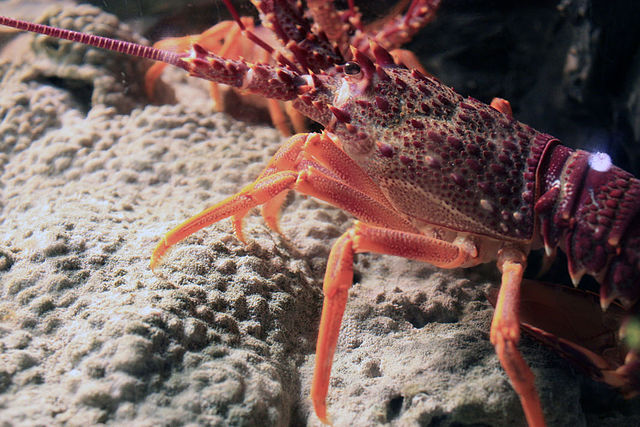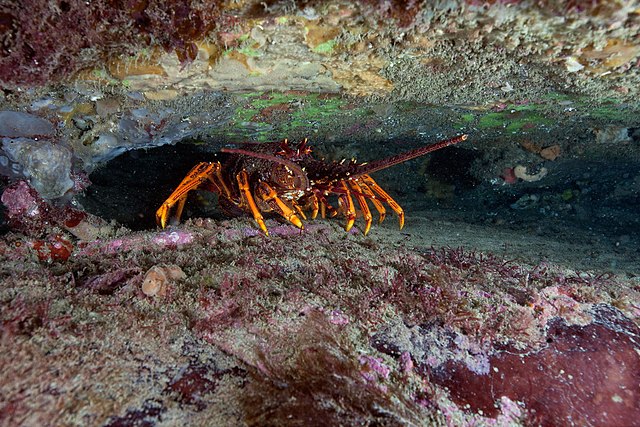On Christmas Day of 2020, a Tasmanian company called Ornatas produced their first aquacultured baby Australian Rock Lobster also called the Southern Rock Lobster. This came to be after scaling up technology based on the University of Tasmania‘s research to breed the first tropical rock lobsters for commercial aquaculture. Here’s the back story and why this is being dubbed by some the “Holy Grail of Aquaculture”.

The Australian Rock Lobster is found throughout the waters of Australia, New Zealand and the Chatham Islands. This species has the most highly managed fishery in the world! Here is a video showing the Western Rock Lobster Fishery during a harvest in 2017:
All of the commercial fisheries for this species are controlled by quota management or output controls. Each commercial fishery has a set amount of Australian Rock Lobsters that they can catch per year. This amount is determined by the rate at which the fishery can naturally replenish itself. This way the species is conserved is a sustainable manner while the fishery can still increase profitability over time. This is done by a very detailed, daily collection of data by the commercial fisheries. Over 20% of the fisheries have volunteers that participate in collecting even more data that is shared across the fisheries for overall better tracking of the species.
A unique thing that these volunteers – who are staff from research organizations – do is that they also record bycatch and other environmental factors that could potentially harm the extensive larval rearing process of this species. This allows scientists to monitor and manage the commercial fisheries’ impact on the Australian Rock Lobster’s environment and allows for opportunities to support repair it if needed.
Australian Rock Lobster Reproduction
The males become sexually mature between the ages of 7 and 11 years old. For the females – here’s where it gets a bit complicated: According to a study done by the South African Journal of Marine Science in 1994, 2 methods dating back to 1969 have been researched and used in order to determine when a female Australian Rock Lobster is mature:
Method 1: Of a population of females, if 50% of them are carrying eggs, then they are ready to breed with the males.
Method 2: The pleopod or little legs that you see in the image below are examined for signs of maturity in order to gauge the individual’s sexual maturity.
This is important because a female weighing about 8.82 lbs can produce more than 1.5 million eggs each per breeding season. Of those 1.5 million, less than 1% will survive until adulthood.

The reason for this is because the female will carry her eggs for 4 to 6 months. If she survives without being eaten, once the eggs hatch the lobster larvae have a tough 9 to 24 month journey of surviving in the wild while they become a juvenile. They take the ocean currents and end up living in the water column. At night they swim to the shore and ledges searching for a coral reef. If they are lucky, they find themselves a coral reef to live on. From there it takes about 5 to 6 years for them to reach their adult size when they can be legally harvested for human consumption.
Due to the time variable, this aquaculture project took the CEO of Ornatas, Scott Parkinson 2 decades worth of studies and a $15 million dollar investment in order to set up a facility that will allow these lobsters to reproduce, grow and then scale his efforts. In order to hold the amount of lobsters that will be needed in order to consistently meet the demand for this species is pretty vast to say the least. Within the next 10 years over ~2,200 lbs of rock lobsters will be produced annually in Australia. This will significantly relieve a lot of strain off of the regulated wild populations in order to meet demand.
This species is so important to the Australian fisheries as well as for other commercial fisheries that since the 1980s almost 1 million Australian Rock Lobsters were tagged and released. This helps the scientists who are monitoring the fisheries to determine the annual quota numbers. With so many of these species tagged for monitoring purposes, it is not uncommon to run into one in the wild. These tags are usually yellow in color and contain contact information on them. You can send the details of the found lobster to the fishery scientists and receive some pretty good rewards for doing so. Such a cool way to get even more data and get the public involved helping to regulate human consumption of this species!
The Victorian Fisheries Authority produced this great video that contains a ton of information on this species including information on the tagging process for this species which you can watch below.
